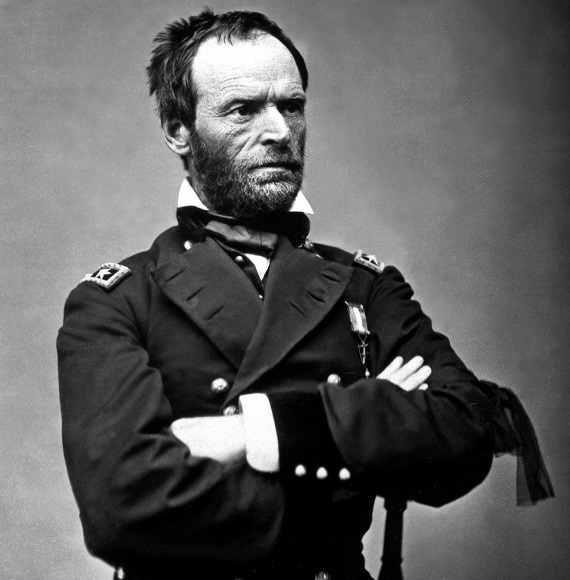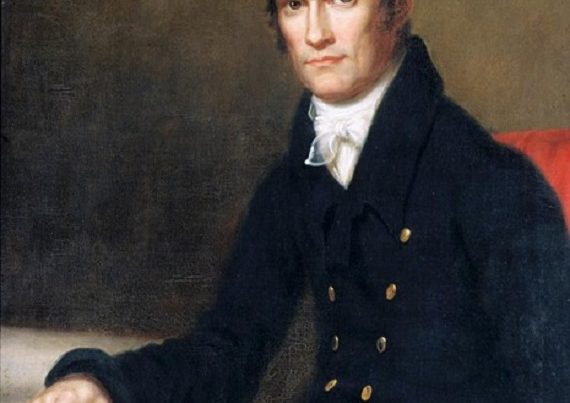Lately, media outlets have been giving some attention to the 150th anniversary of General William T. Sherman’s infamous march through Georgia that took place in 1864, minimizing, of course, the barbarity and criminality of his campaign. You only have to read the letters and diaries written at the time of the actual events to learn the truth of the matter, however, and memoirs written long after the fact can be just as truthful. Contemporary official military correspondence and reports document the fact that Sherman shelled Atlanta without notice, deliberately aiming his guns over the Confederate lines of defense and firing into the residential and business areas of the city, killing civilians there. Mrs. Robert Campbell, who fled her home in Bolton, Georgia to take refuge in Atlanta, recalled that during the shelling in 1864, “A shell killed a newborn baby and its mother in a house adjoining mine. I hastened into a bomb-proof, as fast as possible. As I entered the door to this shelter a sixty-pounder fell almost at my feet. Suppose it had burst, where would I have been?”
Any honest person who takes the time and trouble to study the war of 1861-1865 cannot help but perceive a striking contrast between the conduct of the Northern forces (the so-called “Grand Army of the Republic”) and the Confederate troops. The campaigns of Sherman and Sheridan were not the only demonstrations of savagery by the northern army, in whose operations the practices of wanton destruction, pillage and abuse of civilians were widespread and often systematic from beginning to end, and characterized by a ruthlessness that was all the more monstrous because it was directed at fellow Americans.
On December 11, 1862, after U.S. forces drove back the defending Confederate troops from Fredericksburg, Virginia, the town was thoroughly and pillaged and vandalized. Even churches were defaced and looted, and valuables were stolen from the Masonic lodge in which George Washington had once been a member. Colonel William Davie DeSaussure of the 15th South Carolina Volunteer Infantry Regiment was proud of his men who, despite their own lack of food and clothing, contributed several hundred dollars for the relief of the civilians of Fredericksburg, “pitiable refugees” whose homes and been plundered by the Federal soldiers who occupied the town.
In the summer of 1863, the 15th S.C. Infantry Regiment was in Pennsylvania with the Army of Northern Virginia under the command of General Robert E. Lee. Lee’s ragged, malnourished men were suffering from scurvy, and their horses were starving. In dire need of food, clothing, and equipment, the army foraged extensively in Pennsylvania, obtaining essential military supplies including horses, mules, wagons, shoes, and livestock, and helping themselves to such in Federal property in government warehouses and depots. Lee, however, instructed his men to pay for anything they took from civilians. A newspaper reported, for example, that the entire stock from a boot and shoe dealer’s store in Mechanicsburg was cleaned out by soldiers who paid the merchant $4,000 in Confederate money for the footwear. Anyone who declined payment was nevertheless issued a copy of a receipt. Lee also issued an order which forbade “the wanton destruction of private property.” His hungry soldiers often availed themselves of large amounts of poultry and livestock from houses and farms while foraging for subsistence (not spoils), sometimes without paying, but these orders were generally followed, especially as far as “wanton destruction” was concerned.
Franklin Gaillard, a Confederate officer from South Carolina who served in Lee’s army, wrote home to his son on June 18, 1863, that General Lee had “issued very stringent orders” concerning the treatment of private property. Gaillard added: “He is very right for our Army would soon become demoralized if they were allowed to do as many of them would like to. Many of them think it hard that they should not be allowed to treat them [the Pennsylvanians] as their soldiers treated our people.”
While the Confederates were in control of Gettysburg, they searched the town for horses and foodstuffs, but, with few exceptions, left most other civilian property undisturbed. A Confederate officer there, Captain Barziza, described the contrast between Gettysburg and Fredericksburg:
Whilst in Gettysburg, I could not but remark the difference between the conduct of our army and that of the enemy in invading our country. Here stood the town, after three day’s hard fighting around and in it, almost entirely untouched. No wanton destruction of property of any description could be seen; no women and children complained that they were homeless and beggars. Then I called to mind the scenes around the city of Fredericksburg the winter previous; private houses sacked and burned, books, furniture, and everything perishable utterly destroyed; women flying from burning houses with children in their arms, and insult and outrage at full license.







